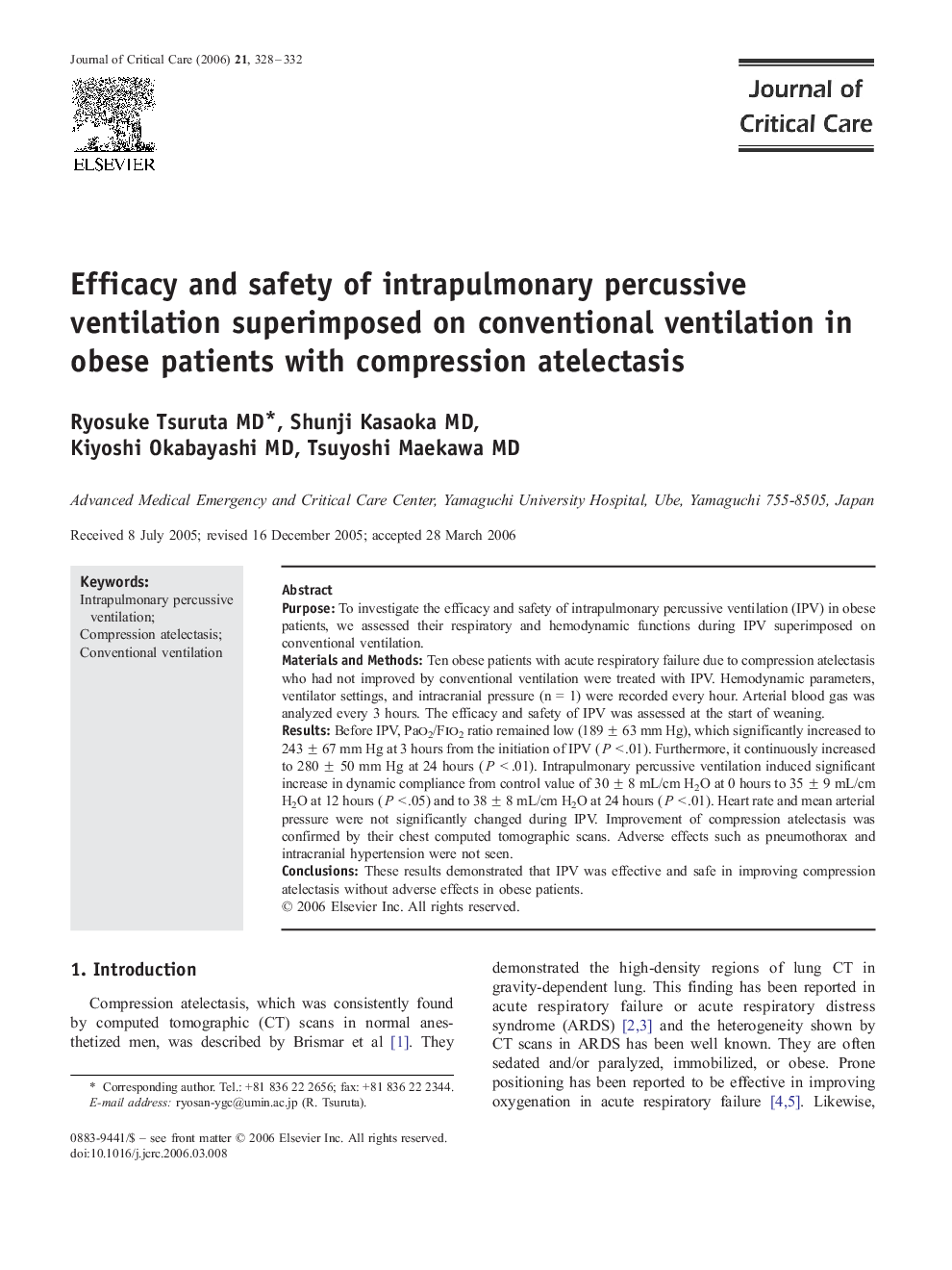| Article ID | Journal | Published Year | Pages | File Type |
|---|---|---|---|---|
| 2765133 | Journal of Critical Care | 2006 | 5 Pages |
PurposeTo investigate the efficacy and safety of intrapulmonary percussive ventilation (IPV) in obese patients, we assessed their respiratory and hemodynamic functions during IPV superimposed on conventional ventilation.Materials and MethodsTen obese patients with acute respiratory failure due to compression atelectasis who had not improved by conventional ventilation were treated with IPV. Hemodynamic parameters, ventilator settings, and intracranial pressure (n = 1) were recorded every hour. Arterial blood gas was analyzed every 3 hours. The efficacy and safety of IPV was assessed at the start of weaning.ResultsBefore IPV, Pao2/Fio2 ratio remained low (189 ± 63 mm Hg), which significantly increased to 243 ± 67 mm Hg at 3 hours from the initiation of IPV (P < .01). Furthermore, it continuously increased to 280 ± 50 mm Hg at 24 hours (P < .01). Intrapulmonary percussive ventilation induced significant increase in dynamic compliance from control value of 30 ± 8 mL/cm H2O at 0 hours to 35 ± 9 mL/cm H2O at 12 hours (P < .05) and to 38 ± 8 mL/cm H2O at 24 hours (P < .01). Heart rate and mean arterial pressure were not significantly changed during IPV. Improvement of compression atelectasis was confirmed by their chest computed tomographic scans. Adverse effects such as pneumothorax and intracranial hypertension were not seen.ConclusionsThese results demonstrated that IPV was effective and safe in improving compression atelectasis without adverse effects in obese patients.
